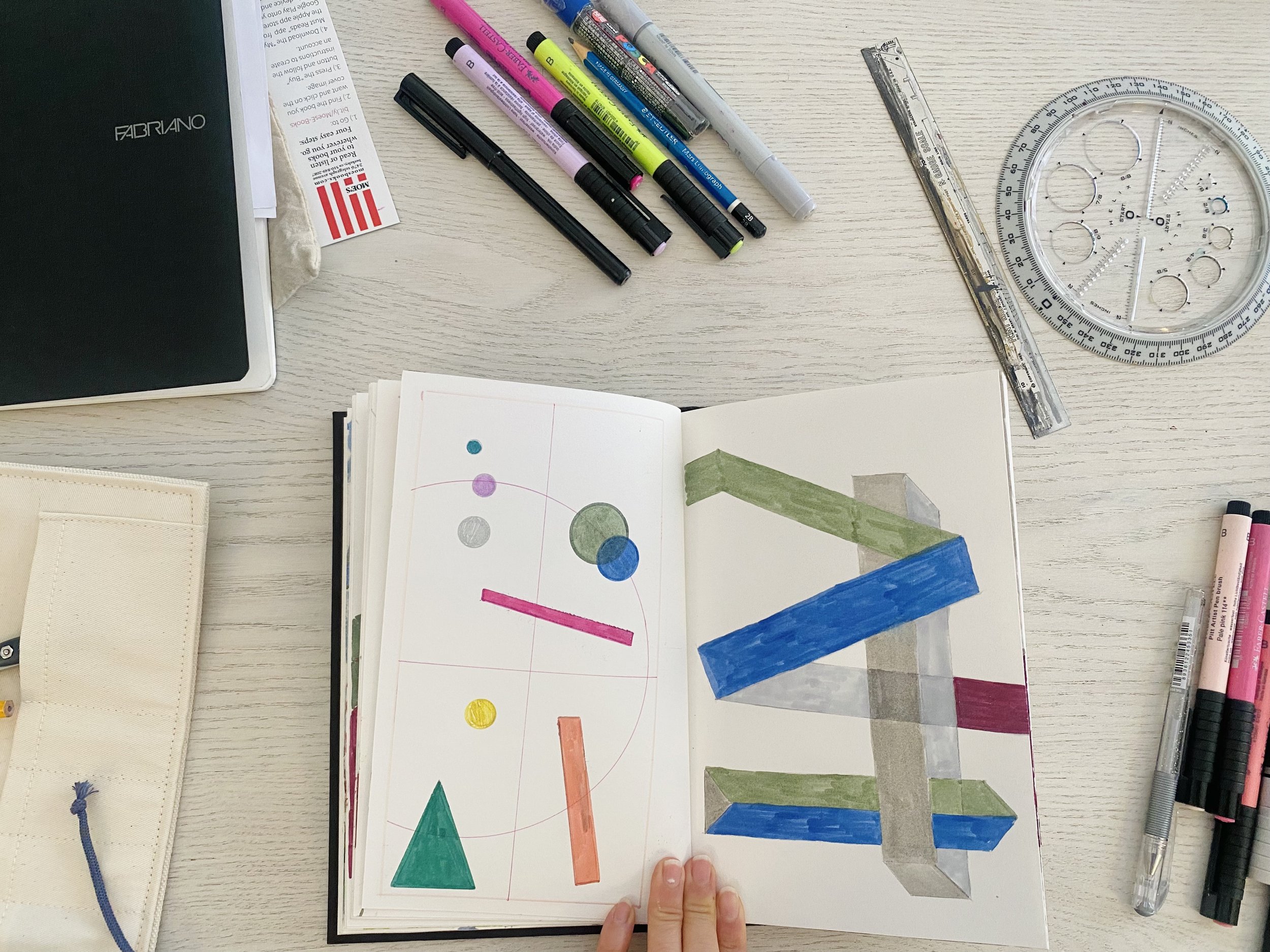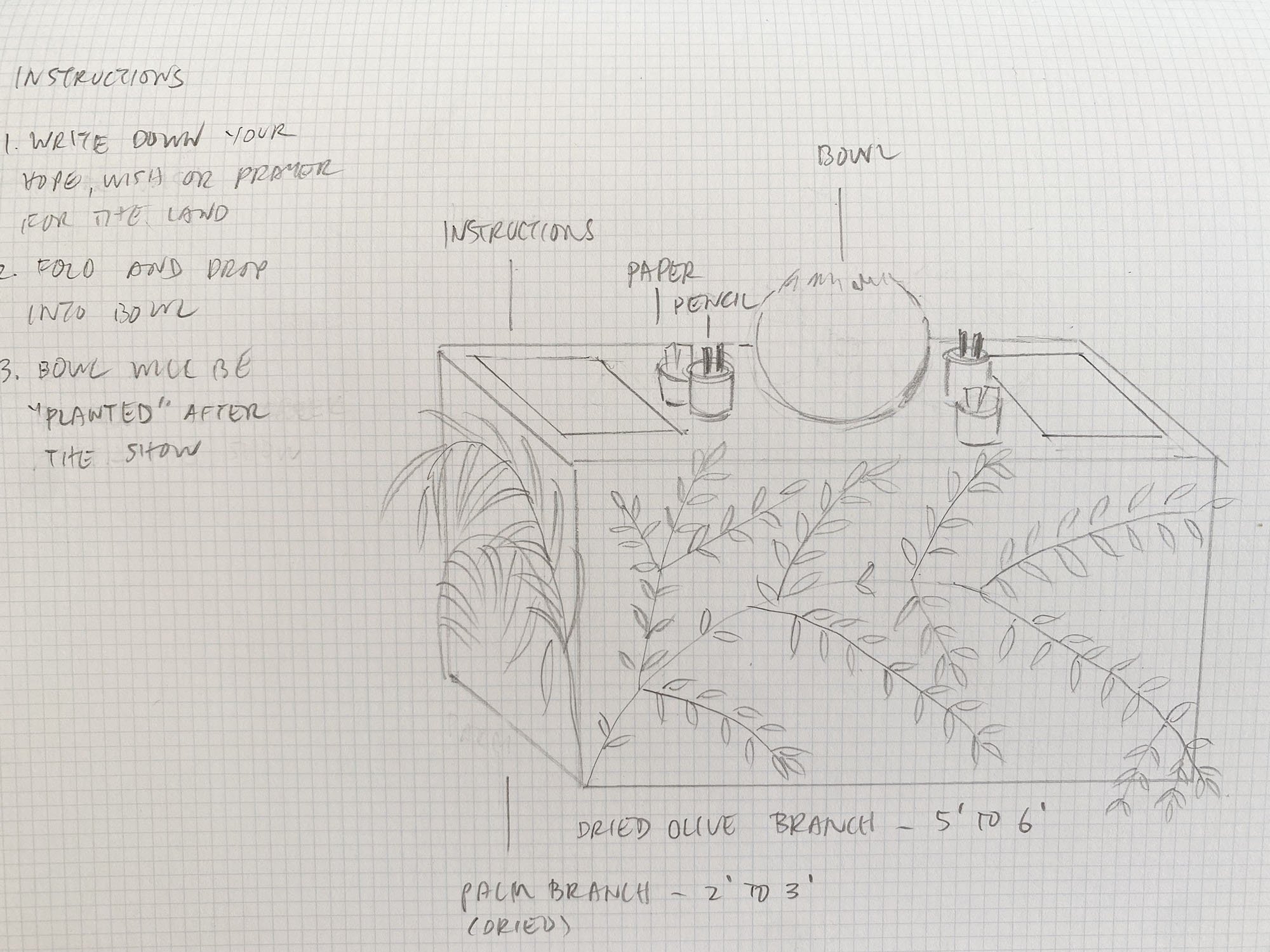When I started taking drawing classes, we began by sketching basic shapes like balls and cubes. It was important to get the shape and lighting correctly. As a kid, I remember using up so many erasers just to get the shading correct on a ball!
At some point, muscle memory kicks in and you can basically free-hand a circle pretty accurately. I think it was about a year or so of consistent drawing classes. With large works, I have a hack (I tape a piece of string to the middle of my work and tie it around a piece of chalk and use that to draw the circumference of a circle).
These fundamental skills are not the most fun but they are absolutely important to become a technically sound artist. My aunt, who has been an artist for over 60 years, told me about how she used to draw a pencil fifty or a hundred times to achieve technical accuracy.
Currently, there are lots of technological tools (like an iPad and Procreate) that help us illustrate with precision and fidelity, but I find that sketching and drawing helps with understanding composition, which is what makes an artwork stand out from being aesthetically pleasing to telling a story (the same reason why you have composition in photography, set design, etc).
Some artists whose sketchbooks I admire are J.M.W Turner’s and Hilma af Klint’s. You will either be blown away or demotivated after seeing Turner’s sketchbooks because his artistic technique is truly unreal. What a master of the craft.
Sketching is an essential part of my process now that I make large-scale paintings. I paint automatically up to a certain point and then I design the composition.
What to Work on (with Sketching)
I like to work on the following:
Shape
Line
Light/Shading
Texture
Color
There are tons of great tutorials on sketching shapes. One of my favorite exercises is literally just drawing circles over and over until you get the hand of free-styling. It’s a necessary warm-up, like scales or jumping jacks, and you’ll even find it meditative after a while.
A good book to read on the importance of line and shape is Wassily Kandinsky’s Point and Line to Plane, which every art student probably comes across at some point. It seems very basic but it was illuminating at its time, as he was one of the first artists to try to formalize abstraction, by gesturing to how fundamentals like shapes, lines and color are needed in order to construct a meaningful composition.
Most teachers would not introduce color here but you know what? I love color and I love sketching in color. I even use metallics because what is the point of sketching if you can’t have a little fun? I really enjoy sketching in purple or red chalk vs. black or even white - not only do colors help adjust lighting but provide perspective by enabling colors to pop or blend in with the paper.
Useful Tools
I always have the following tools for sketching:
Blackwing pencils
Ruler
Protractor
Compass
Metallic pens
Faber-castell markers
You can get any of these on Blick.com, Flax Art or Yoseka Stationary. I also love Nico Neco for nice metallic inks. I also love wandering around Flax Art in Oakland because there is always staff around to give recommendations on what works and doesn’t work for them.
The Faber-Castell artist pens are great for detailed work, including illustrations. I prefer the brush pens as my sketches are often full of simple but big shapes. The nibs look like little brushes and they create a lovely painterly effect.
Fabriano journal with gridlines for installation mock-ups
Sketchbooks of Choice
I’ll make several studies and add different shapes, lines and colors until I get the composition that I like. Then I execute on the large canvas using stencils (some store-bought, some handmade).
I’m a big fan of grids but ultimately I prefer blank journals so I can create my own grids in them.
My favorite sketchbooks are:
I have about 5-6 Strathmore Journals that are filled with sketches from 2020-22. I like to carry the Fabriano ones around for travel. I only used the watercolor journal once - if you have a reco for one you like, please let me know.
What to Sketch - and How?
You can sketch anything! It’s such a cliché but I think an orange is super fun to start with (or some kind of fruit; whatever is around). It’s fundamentally just a circle, with a porous skin, and very non-intimidating. But this blog post is not really about how to sketch. You should check out Mimi Chao’s Skillshare course for basic illustration techniques. As an abstract artist, I’m not focused on illustration rather than sketching as a practice that lets me try out ideas and simulate real life in order to get those ideas. The best way is to get started with the right materials and let your imagination guide you through the rest!

